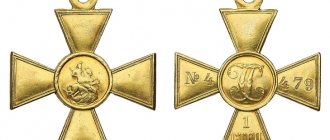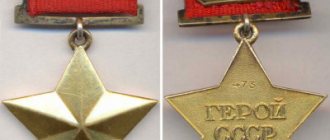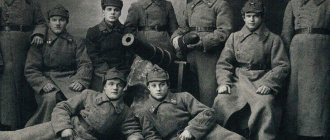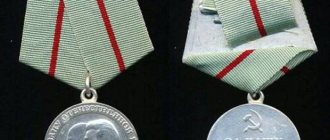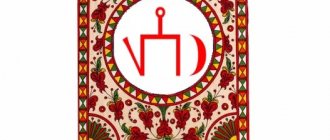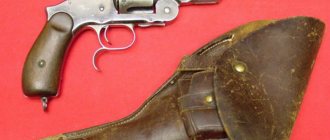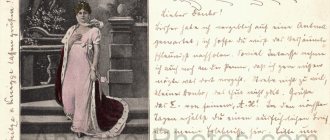Story
The first order was established by Peter I in 1698. The tsar adopted the idea of creating a new reward system during his trip to Europe. Before Peter I, monarchs celebrated their subjects with award weapons, valuable items or land plots. Initially, the merits of the gentlemen sufficient to receive the award were determined by the king personally. This was not a big problem, since before the era of Catherine II there were only 3 orders in the country.
Catherine the Great established 2 new signs in order to be able to reward representatives of all noble classes. The queen's innovations not only improved the system of awards, but also significantly complicated it, which led to the need to create a separate law that was supposed to regulate the procedure for awarding regalia. The “Establishment on Imperial Orders” was established by Paul I on the day of his coronation in 1797. Until 1917, the document determined the hierarchy of awards of the empire and regulated the activities of the governing body - the Russian Cavalry Order. According to the law, the supreme leader of the structure was the king. Direct leadership was exercised by the chancellor, who was appointed from among the holders of the Order of St. Andrew the First-Called.
The procedure and rules for awarding orders in the Russian Empire
The establishment of orders and their degrees led to the need to structure the award system. This is how a special administration appeared in Russia, in charge of the production and presentation of insignia. The Chapter of the Order held meetings of the Cavalry Duma, where the most authoritative cavaliers considered cases of issuing lower degrees of certain orders. Over time, the principles according to which the awards were made were formed:
- orders for military affairs were marked with the image of crossed swords and an order ribbon. There was no such mark only on St. Georgia;
- if the order was divided into several degrees, then the awards were made starting from the lowest. There could be no exceptions;
- after the award of a higher degree, the lower award badge was removed. The rule did not apply to orders received for actions on the battlefield. Thus, the cavaliers of Saints Vladimir and George wore award badges of all levels;
- it was impossible to receive the same order twice.
Over time, the original meaning of military orders was eroded. If earlier the monarch celebrated a warrior who distinguished himself in a military operation, even if it was a person close to the emperor, then by the 19th century the circle of gentlemen expanded significantly. Increasingly, rewards were awarded not for specific merit, but for long service in the army and for work in the bureaucracy.
Interesting: Subjects professing a non-Christian faith received awards without images of saints and their monograms. The figures and symbols were replaced with the Russian coat of arms - a double-headed eagle.
Orders
The list of orders and medals of Tsarist Russia included 9 highest insignia. Despite the fact that the awards were established by different monarchs and had their own statutes, they had common features:
- If the regalia had more than one degree, the nominee could receive them in ascending order, except for the Order of St. George.
- Since 1855, regalia received in war were awarded with an additional element for distinction - crossed swords. The St. George Badge was not produced in this version, because was purely military.
- Until 1855, an additional element was a bow.
- When awarding regalia of a higher status, signs of a lower level were supposed to be removed. The exceptions were regalia with swords and bows, which were allowed to be worn by everyone.
- You cannot be nominated twice for an identical award, except for the Order of St. George.
St. Andrew the First-Called
The first and main sign in the system of orders and medals of the Russian Empire. Established by Peter I in 1698. Named in honor of St. Andrew, who was the patron saint of the Russian land. Intended for the highest ranks of the empire.
The regalia included:
- a cross with a drawing of St. Andrew crucified on a cross, at the ends of which are the letters SAPR;
- an eight-pointed star with a medallion and the inscription: “For faith and fidelity”; it was hung on the chest, above other regalia;
- in some cases, the products were attached to a gold chain.
Despite the same degree, 2 versions of products were produced, with and without diamonds. In total, the order was awarded to 1,100 nominees. The first to be noted was diplomat Fyodor Golovin. In the Russian Federation, the regalia was restored in 1998.
St. Catherine
The highest female award, established in 1714. It had 2 degrees and was awarded to ladies for merit, as well as to grand duchesses by birthright. Motto: “For love and fatherland.” Over the years of its existence, 723 women and 1 man received the product. As a mockery, Peter I granted the regalia to Alexander Menshikov Jr. In the Russian Federation, the award was restored in 2012.
Military St. George
Established in 1769 by Catherine II to be awarded for military achievements. Many experts consider the order to be the main award of Tsarist Russia.
Regalia had 4 degrees:
- A golden cross - in the center of the products there is a composition: St. George on a white horse slays a dragon with a spear. On the back side was the saint's monogram. The golden star had a quadrangular shape and was decorated with 32 rays. The saint's monogram was placed in the center. Both signs bore the motto: “For service and bravery.”
- The signs were identical; a cross and a ribbon were attached to the neck.
- A gold cross of smaller parameters was also worn around the neck.
- The cross was small and clung to his chest.
When presenting the award, the current position of the nominee, previous merits and achievements were not taken into account. Those who received the insignia could enjoy privileges.
St. Prince Vladimir
Formed in 1782 by Catherine II. Regalia had 4 degrees. Subjects who brought benefit and glory to the country were awarded. The number of nominees was limited. Since the mid-19th century, the badge was awarded only to nobles. Judging by the photos of royal orders and medals, the signs are similar in appearance to other regalia. The first degree involved the issuance of a star and a cross, the sides of which had a red tint. Other degrees were limited to the cross.
St. Alexander Nevsky
Founded in 1725 by Catherine I. According to status, this is the 3rd award of the empire. The order had 1 degree and included 3 components: a cross, a star and a moire ribbon. The Empress made the regalia a court regalia, and it was considered an unspoken symbol for her favorites. All the beloved queens were honored by her.
In the 18th century At the ends of the crosses there were red glasses. In the center was a medallion with a drawing of a saint on a horse. Between the ends of the product were placed double-headed eagles under the royal crown. At the beginning of the 19th century, glass was replaced with enamel, and the eagles were modified. The cross clung to the ribbon. The star was placed on the left side of the chest.
Over 2,000 people received the award, most of them during the reign of Catherine II. In 1942, the regalia was restored in the Soviet Union, but in a different form.
White Eagle
Polish order, formed in 1705 and included in the list of Russian awards in 1831 after the dismemberment of the Polish-Lithuanian Commonwealth. The badges of the award were a star and a red cross with a design of a white eagle. Regalia complained to both immigrants from Poland and Russian subjects. In the list, the order followed the award of Alexander Nevsky.
Awards were given for military merits and achievements in civilian activities. The product personified devotion to the emperor, defense of the fatherland and observance of local laws. After the collapse of the USSR, independent Poland restored the regalia on its territory. The insignia was awarded to John Paul II, Carl XVI Gustav and the President of Poland.
St. Anne
The award was valid since 1735 in the Principality of Holstein. Under Catherine II, she was legitimized in Russia and promoted to a dynastic order. The regalia was added to the list of awards under Paul I in 1797. It was awarded for military and civil service, and since 1847 - for indefinite service for 12 years in one position.
The award included 4 degrees. In the photo, this order of Tsarist Russia can be seen with and without diamonds. Its symbols were a red cross with a portrait of St. Anna and the star.
The 2nd degree cross was similar, but with smaller parameters. The 3rd degree badge was made in the form of a medallion with a cross in the center. Until 1815, it was awarded exclusively to officers for their bravery. In the same year, Alexander I established the 4th degree for junior officers. The product was produced in the form of a large medallion with a cross.
St. Stanislaus
Another Polish order, founded in 1765 and included in the list of awards after the annexation of the Polish-Lithuanian Commonwealth. In terms of status, it was the lowest regalia with 4 degrees (the last degree was abolished in 1839). Signs of the 1st degree - a cross on a ribbon and a star clinging to the chest, 2nd degree - a cross on the neck, 3rd and 4th - a cross on the chest. The presentation was massive. Most of the nominees are imperial officials.
St. John of Jerusalem
The order was formed under Paul I in 1798. It was awarded for military and social achievements. Regalia had 3 degrees:
- Grand Commander's Cross.
- The Commander's Cross is similar to the 1st degree, but with fewer knightly attributes.
- Cavalier's cross decorated with a crown.
After the death of Paul I, his successor Alexander I in 1810 issued a decree to stop issuing awards. The sign was completely canceled in 1817.
Officer's award crosses
This publication examines the award gold officer badges (crosses), awarded for distinction shown in the fierce and bloody battles of Russian troops during the assault on Ochakov (“Ochakov/ take. 6/December/ 1788.”), Izmail (“Izmail/ take/ December 11/ 1790."), Prague suburb of Warsaw (“Prague was taken/ October 24/ 1794.”), the battles of Preussisch-Eylau (“victory at Preussisch/Eylau/ 27 Sep:/ 1807”) and during the assault Bazardzhik (“during the capture / attack / of Bazardzhik / May 22 / 1810”).
Such crosses, worn in a buttonhole on a St. George ribbon, were awarded for courage and bravery to officers who did not receive the Orders of St. George and St. Vladimir with a bow in the above battles. Awarding a gold badge gave an advantage to receiving the Order of St. Theory, IV degree, for 25 years of service, reducing it by three years.
The St. Petersburg Mint was entrusted with the production of crosses, which were minted from gold of at least 95 samples. This is described in detail in the research of V.V. Bartoshevich “In the fight against Napoleon. Numismatic essays" (Kyiv, 2001) and D.I. Peters "Award medals of Russia in the second half of the 18th century" (M., 2004).
I. Let's look at the gold officer's crosses minted at the St. Petersburg Mint,
published in various sources: I.G. Georgi “Description of the Russian-Imperial capital city of St. Petersburg” (St. Petersburg, 1794), O.P. Belyaev “The Cabinet of Peter the Great (St. Petersburg, 1800), auction catalog “Coins and Medals” ( Hanover, 1931), Auction catalog of Russian gold coins and medals from the collection of Grand Duke George Mikhailovich (Lucerne, 1939) and other sources, including from private collections.
The main difference between genuine gold crosses and new ones minted at the St. Petersburg Mint at a later time is the absence of an eyelet on the cross, as well as the weight of the crosses minted later. But the table below shows that the weight of the crosses of the same name varies: for Ochakov - from 26.0 to 34.6 g, for Izmail - from 27.0 to 37.0 g, for Prague - from 36.5 to 41.0 g This is due to the fact that the awarding of crosses lasted for many years - until the early 30s of the 19th century, while the recipients of these awards were alive and there was a need for additional production of crosses (for various reasons, mainly in case of their loss). The crosses for Preussisch Eylau and Bazardzhik were minted simultaneously for all recipients, so their weight may vary slightly. Genuine crosses for Preussisch-Eylau weigh 25.2-25.6 g, for Bazardzhik - 21.3 g.
Consider the following officer crosses:
. “For excellent courage” during the capture of Ishmael. Gold, size - 47x47 mm, weight - 36.7 g.
. “For labor and courage” at Preussisch-Eylau. Gold, size - 37.5x37.5 mm, weight - 25.2 g.
In terms of weight, size, stamps on the front and back sides, and appearance, these crosses correspond to the technical characteristics of genuine awards.
Genuine officer's gold crosses are the rarest awards, since they were minted in a small edition and, according to the decrees of Emperors Paul I, Alexander I and Nicholas I, after the death of the awarded gentleman, they were returned to the chapter of orders. In case of non-return of the golden cross, the heirs of the cavalier were obliged to pay the cost to the treasury.
Unfortunately, the characteristics of officer crosses in state collections have not yet been published. Gold crosses not minted at the St. Petersburg Mint are not considered here.
II. Custom crosses of approved size, made by private workshops of gold and silversmiths in the period 1788-1815
In 1788-1815, at the orders of cavaliers, private gold and silver workshops produced a significant number of gilded officer crosses from silver or bronze, which were used in order not to outweigh awards from one uniform to another. In the 19th century, this continued in the production of Russian order badges - in addition to capitular (state orders), various workshops also made orders according to the orders of cavaliers.
Consider the following officer crosses:
. “For service and courage” during the capture of Ochakov. Bronze, fire (mercury) gilding. Size - 45x45 mm, weight - 27.2 g. The first image of this cross is in the book “The Collection Serves People” (L., 1973. Table of awards from the collection of VL. Gorshkov).
. “For labor and courage” during the capture of Prague. Bronze, fire (mercury) gilding. Size-46×46 mm, weight-17.7 g.
. The same with the capture of Prague. Bronze, fire (mercury) gilding. Size - 45x45 mm, weight - 15.0 g.
. The same with the capture of Prague. Bronze, fire (mercury) gilding. Size 45x45 mm, weight - 25.7 g.
. The same with the capture of Prague. Bronze, fire (mercury) gilding. Size - 45x45 mm, weight - 21.8 g (ear - transverse).
. The same with the capture of Prague. Bronze, fire (mercury) gilding. Size—47.5×47.7 mm, weight—26.7 g. Workshop mark “VG.” on the ear.
Crosses No. 5 and No. 6 were made in the same workshop, they are the same: the configuration of the rays, the stamp on the front and back sides, similar fire (mercury) gilding.
. “For labor and courage” during the capture of Preussisch-Eylau. Silver, fire (mercury) gilding. Size - 38x38 mm, weight - 9.9 g.
. The same at Preussisch-Eylau, Bronze, fire (mercury) gilding. Size - 36x36 mm, weight - 9.1 g.
. The same with the capture of Preussisch-Eylau. Bronze, fire (mercury) gilding. Size - 37.5x37.5 mm, weight - 17.7 g.
. The same with the capture of Preussisch-Eylau. Bronze, fire (mercury) gilding. Size - 36x36 mm, weight - 8.5 g.
. “For excellent courage” during the capture of Bazardzhik. Bronze, fire (mercury) gilding. Size - 36x36 mm, weight - 9.2 g.
. The same with the capture of Preussisch-Eylau. Silver, gilded. Size - 37.5x37.5 mm, weight - 15.8 g. Workshop mark "1B" - Bergstrom Jonah. St. Petersburg before 1816
All these crosses are genuine awards, made by different workshops to order from gentlemen, have different typologies, but all are gilded using the fire (mercury) method in gold of different shades.
III. Crosses made at the St. Petersburg Mint in bronze and gilded in private workshops of gold and silversmiths in 1807-1815
. “For labor and courage” at Preussisch-Eylau, made at the St. Petersburg Mint with an authentic stamp. Bronze, fire (mercury) gilding. Size - 38x38 mm, weight - 14.3 g.
. “For excellent courage” during the capture of Bazardzhik.” Bronze, fire (mercury) gilding. Size - 37.5X37.5, Weight - 6.1 g.
IV. Crosses of reduced size, made by private workshops of gold and silversmiths in the 1816-1830s
By the highest decree of Emperor Alexander I of January 20, 1816, the Russian Order Chapter was ordered to reduce the size of the order badges according to the transmitted samples, therefore the officer crosses for Ochakov, Izmail, Prague, Preussisch-Eylau and Bazardzhik were reduced in proportion to the orders.
Consider the following samples:
. “For excellent courage” during the capture of Ishmael. Bronze, fire (mercury) gilding. Size - 32x32 mm, weight - 6.9 g.
. The same with the capture of Ishmael. Gold. Size - 23x23 mm, weight - 2.3 g.
. “For excellent courage” during the capture of Bazardzhik. Bronze, fire (mercury) gilding. Size - 28x28 mm, weight - 5.1 g.
. The same with the capture of Bazardzhik. Silver, fire (mercury) gilding. Size - 29x29 mm, weight - 6.5 g.
According to V.V. Bartoshevich, the following examples of crosses of reduced size are known. The collection of the Military Historical Museum of Artillery, Engineering Troops and Signal Corps contains a gilded bronze cross for Preussisch-Eylau measuring 29x29 mm, which belonged to the partisan poet D.V. Davydov. In the State Hermitage there are several crosses for Bazardzhik, the size of which ranges from 25x25 to 33x33 mm. In the collection of Professor V.V. Ashik there was a cross for the capture of Ochakov measuring 33x33 mm.
The crosses listed are genuine awards made by various workshops to order from the gentlemen. They have different typologies, all are covered with fire (mercury) method with gold of different shades.
V. Crosses minted at the St. Petersburg Mint, gilded by electroplating in the 1830s
. “For service and courage” during the capture of Ochakov. Bronze, ear - silver, soldered, galvanic gilding. Size - 47x47 mm, weight - 27.0 g.
This cross, minted with the stamp depicted in the “Collection of Russian Medals” (St. Petersburg, 1840. Plate XL, No. 208), was presumably made for the 50th anniversary of the capture of Ochakov in 1838. Rarity. (Such a cross was kept in the museum of the 4th Ulan Kharkov Regiment in 1912.)
. “For labor and courage” during the capture of Prague. Bronze, with hammered eyelet, galvanic gilding. Size - 47x47 mm, weight - 21.0 g. Made in the late 30s of the 19th century.
. “For excellent courage” during the capture of Ishmael. Silver without gilding. Size - 46x46 mm, weight - 19.8 g.
The cross for the capture of Izmail, minted with the stamp depicted in the “Collection of Russian Medals” (St. Petersburg, 1840. Table XLI, No. 213), was made in the late 30s of the 19th century.
Crosses for the capture of Ochakov and Prague are genuine awards, made to order from the cavaliers, minted at the St. Petersburg Mint and gilded by electroplating in the late 30s of the 19th century. Silver cross for the capture of Izmail for the collection of the regimental museum.
VI. Crosses minted at the St. Petersburg Mint at the end of the 19th - beginning of the 20th centuries for the collections of regimental museums
“For service and bravery” during the capture of Ochakov. Gilded bronze. Size - 46x46 mm, weight - 25.0 g.
. “For excellent courage” during the capture of Ishmael. Bronze without gilding. No ear. Size - 47x47 mm, weight - 22.7 g.
. “For labor and courage” during the capture of Prague. Gilded bronze. Size - 46x46 mm, weight - 22.0 g.
. “For labor and courage” at Preussisch-Eylau. Gilded bronze. Size - 36x36 mm, weight - 9.9 g.
. The same thing at Preussisch-Eylau. White metal. Size - 36x36 mm, weight - 9.9 g.
. The same thing at Preussisch-Eylau. Gilded bronze. Size - 36x36 mm, weight - 13.0 g.
Crosses Nos. 27, 28, 29 were minted at the St. Petersburg Mint with one die, as it was gradually destroyed.
The crosses, minted at the St. Petersburg Mint at the end of the 19th and beginning of the 20th centuries, were made for the collections of regimental museums and private collections. They are found in silver, bronze, white metal, gilded or without gilding, with lugs and without lugs.
So, in the “Review of military antiquities. Section I. Museums of military units. Issue I" (Moscow, 1912) it is noted that in the museum of His Majesty's 65th Moscow Infantry Regiment bronze crosses for Ochakov, Izmail and Prague were kept. In the museum of the 13th Beloozersky Infantry Field Marshal Count Lassi Regiment there is a golden cross for Preussisch-Eylau. In the museum of the 11th Grenadier Phanagorian Generalissimo Prince Suvorov Regiment there are bronze crosses for Izmail and Prague. And in the museum of the 4th Uhlan Kharkov Regiment there is a gilded cross for the capture of Ochakov. Similar crosses were also kept in the museums of other regiments.
The article does not discuss newly made crosses of modern production, made of gold, a number of which appeared at Western auction sales in the 90s of the 20th - early 21st centuries. For the most part, they are minted with newly made stamps in modern technological processing, upon careful study of which one can see significant differences between these marks from the original and new ones (from the mint) of the late 19th - early 20th centuries .
The officer crosses we examined are outstanding monuments of Russian military history, reminiscent of the military glory and devoted service of our ancestors for the benefit of Russia.
Mikhail SELIVANOV
Magazine "Antiques, art and collectibles", No. 30 (September 2005), p.128
Medals
Medals of the Russian Empire are official awards that were awarded for participation in the war. Unlike orders, they were intended not only for representatives of the nobility, but also for lower ranks, as well as ordinary soldiers. The first medal of Tsarist Russia - “For the Poltava Victory” was created by Peter I in 1709. Then medals appeared - “For the capture of Narva”, “For the defense of Sevastopol”, “For the victory at Preussisch-Eylau” and other regalia that were created in honor of the military and historical events. For example, “In memory of the Patriotic War of 1812”, “For the conquest of the Western Caucasus”, etc.
In addition, there was a place in the list of awards for a cross, which was awarded to the lower strata of the population as a reward for courage shown during the battle. This option was used due to the fact that orders were awarded only to nobles. And receiving certain higher awards automatically provided the right to nobility, which could not be applied to commoners. Therefore, such insignia were introduced periodically. For example, under Catherine II there were medals that were awarded to all participants in the military campaign. Alexander II believed that when assigning incentives, the achievements of each soldier should be taken into account. This is how the award appeared - the St. George Cross, upon receipt of which the nominee was paid a small bonus and was provided with certain benefits.
Seniority of orders of Tsarist Russia
Seniority was enshrined at the legislative level in the Code of Institutions. By the beginning of the twentieth century, it operated in this order (from highest to lowest):
- Order of St. Andrew the First-Called;
- Order of Catherine the Great Martyr;
- Order of St. Vladimir;
- Order of St. George;
- Order of Alexander Nevsky;
- Order of the White Eagle;
- Order of St. Anne;
- Order of St. Stanislaus.
According to the established rules, the award was made from lowest to highest degree. In some cases, the order was violated: if the recipient served for more than 10 years in the officer rank and was at the same time a Knight of St. George, 4th class, it was possible to receive Stanislav of the 2nd class, “skipping” Anna and Stanislav of the 3rd class.
Interesting: Higher degrees were excluded from the gradual award process. The Emperor personally chose who to honor with Andrew the First-Called, St. Vladimir 1st Art. and St. Catherine.
Separately, it is worth mentioning the Maltese Cross, which during the reign of Paul I was the highest insignia in the Russian Empire. After the great campaign of Napoleon I to Egypt, the Knights of Malta wrote an appeal to the emperor with a request to become Grand Master, and Paul accepted this invitation. After which he established the Order of St. John of Jerusalem, which surpassed even St. Andrew the First-Called in its importance. The successor of Paul I by decree suspended the issuance of the Maltese Cross, and then completely banned it.
